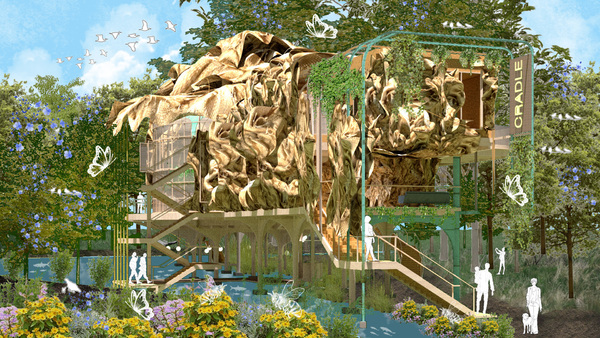Technological apparatus: non-human neighbourhood as the posthuman fantasy
Accelerated culture is the theory of technology, Paul Virilio thinks of the perception of the vision machine and speed machine as the apparatus to change collective behavior. From an architectural perspective, typology is the apparatus of architecture to trigger the transformation of experience as it integrates with function and materiality.
Virilio’s theory mentioned the form of perception that emerges from the absence and lost snippet of time which is the junction or many gaps between the continuity of time, space, or perception. This project can be embodied through the materiality and the typology of space that is converging the tendency of sustainability and the imagination of national pollination strategy in future habitats as well as the history of the place. The role of technology is ubiquitous that connects humans and non-humans which increases the complexity of architectural thinking, such as the application of new material, space, and occupants, and reimagines the meaning of sustainability in post-human architecture.
The scene of dissolving material is the imaginative performance between material and environment; asking the question of whether the technology can improve the biodegradable process and what the process of dissolving means to the principle of aesthetics; the duration of disappearing is encapsulating the art of nature as the material is decomposed and becomes a nutrient for cultivating the habitat.
This thesis develops the concept of ecological machines from the concept of vision machines and speed machines. These are the apparatus that is changing collective behavior from human to non-human in this project. The more the habitat gets used to this kind of ecological machine, the more beautiful it will be. Through this experiment, it is re-iterating the exploration of ecology that the bee has a prominent role in the non-human network.


